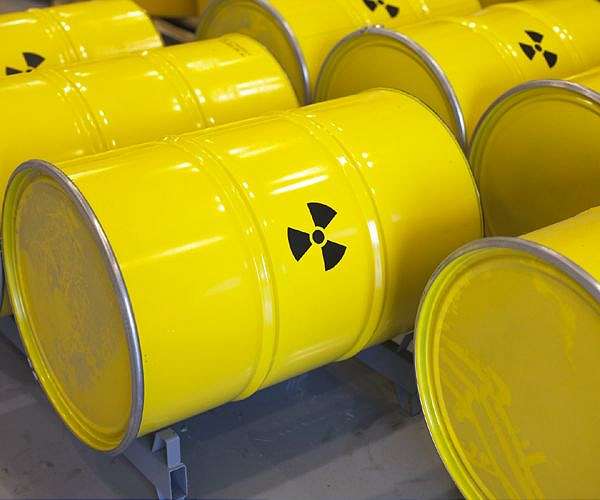Scientists develop battery that converts nuclear waste into electricity
A research team has unveiled a new battery that is able to use nuclear energy through light emissions, making it possible to convert radioactive waste into electricity.
Nuclear energy contributes approximately 20% of the electricity of the United States and generates minimal greenhouse gas emissions. However, there is a major challenge over the production of radioactive waste, which forms danger to the environment and health. Safe management and re -use of this waste is a crucial care.
Under the leadership of scientists from Ohio State University, the research team developed a system that integrates scintillator crystals materials that radiate light when absorbing radiation with solar cells. This combination makes collecting gamma radiation from the environment to produce electrical power, which demonstrates potential applications for micro electronics such as microchips.
The prototype battery, which only measures 4 cubic centimeters, was tested with the help of two common radioactive isotopes: Cesium-137 and Kobalt-60. These isotopes belong to the primary splitting by -products of used nuclear fuel. Led in the Nuclear Reactor Laboratory of Ohio State, the experiments showed promising results. When exposed to Cesium-137, the battery produced 288 nanowatt of power, while cobalt-60, a considerably more powerful isotope, yielded 1.5 microwatts-genoeg to activate a small sensor.
Although typical household and electronic devices require strength, measured in Kilowatt, the researchers believe that their approach can be scaled up to achieve applications at the water level. “With the right power source, this technology has the potential to achieve considerable energy output,” said Raymond Cao, the main author of the study and a professor in mechanical and space technology in the state of Ohio.
Published in the magazine Optical Materials: X, the study highlights potential applications for these batteries in environments where nuclear waste is present, such as storage pools and specialized systems for space or deep-sea reconnaissance. These batteries are not intended for the use of consumers. Despite the use of gamma radiation, which is much more penetrating than conventional X-rays or CT scans, the battery itself does not contain radioactive materials, making it safe to handle.
“We take what is traditionally seen as waste and converting into something valuable,” explains CAO, which also leads the nuclear reactor laboratory of Ohio State.
The study also suggests that the power of the battery was influenced by the specific type of Scintillator Kristal that was used. The researchers discovered that factors such as the shape, size and volume of the crystal had a direct influence on the ability to absorb radiation and convert energy into the light, so that the efficiency of the solar cell in generating electricity was subsequently improved.
“These results mark a significant breakthrough in terms of power,” says Ibrahim Oksuz, co-author and research employee in mechanical and space technology in the state of Ohio. “This two-step energy conversion process is still in the early stages, but the next investigation phase will focus on scaling up the technology to generate electricity in the Watt range.”
Since these batteries would mainly be used in environments with high radiation levels and limited access to people, their design eliminates the need for routine maintenance and prevents extra environmental pollution.
However, the CAO noted that the mass production of such batteries can be expensive, so that further research is needed to determine their feasibility and lifespan. Oksuz repeated this sentiment and emphasized that continuous exploration is needed to refine the practical applications of the technology.
“The concept of a nuclear battery is a lot of promise,” said Oksuz. “Although there is still room for improvement, I believe that this technology can play a key role in energy production and sensor technology in the future.”
The study was supported by the National Nuclear Security Administration of the US Department of Energy and the Office of Energy Efficiency and Renewable Energy. Extra contributors are Sabin Neupane and Yanfa Yan from the University of Toledo.
Research report:Scintillator -based nuclear photovoltaic batteries for microwatt -level power generation

